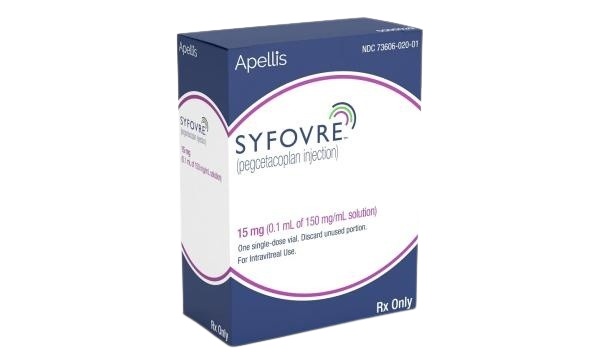Syfovre (Pegcetacoplan): Benefits, Side Effects, and Key Considerations

Syfovre (Pegcetacoplan): Benefits, Side Effects, and Key Considerations
For patients with geographic atrophy (GA), a progressive form of age-related macular degeneration (AMD), Syfovre (pegcetacoplan) represents a groundbreaking treatment option. As the first FDA-approved therapy for GA, it offers hope for slowing vision loss—but understanding its effects, risks, and proper use is essential.
1. What Is Syfovre (Pegcetacoplan)?
Syfovre is a complement C3 inhibitor that:
✔ Slows GA lesion growth by ~20% (clinical trial data)
✔ Preserves retinal cells by targeting overactive immune responses
✔ Administered via intravitreal injection (every 25–60 days)
Approved for:
GA secondary to dry AMD (not for wet AMD)
2. How Effective Is Syfovre?
In clinical trials (DERBY/OAKS studies):
Reduced GA progression by 19–22% at 12 months (vs. sham injections)
Benefits increased with longer treatment (up to 24 months)
Limitation:
Does not restore vision—aims to delay further damage
3. Common vs. Serious Side Effects
| Common (Mild-Moderate) | Serious (Require Urgent Care) |
|---|---|
| • Eye discomfort/redness | • Retinal vasculitis (vision loss risk) |
| • Floaters | • Endophthalmitis (eye infection) |
| • Mild headache | • Retinal detachment |
Note:
Regular eye exams are critical to monitor for complications.
4. Key Precautions
Before Starting Syfovre
✔ Confirm accurate GA diagnosis (not wet AMD)
✔ Screen for eye infections/inflammation
✔ Disclose all medications (e.g., blood thinners)
During Treatment
Report immediately: Sudden vision changes, eye pain, or flashes of light
Avoid rubbing eyes post-injection to prevent infection
5. Cost and Accessibility
Price: ~4,600–$6,900)
Insurance: Medicare Part B typically covers 80%; prior authorization often required
Financial aid: Manufacturer (Apellis) offers copay assistance
Q&A: Addressing Patient Concerns
Q1: How soon does Syfovre work?
A: Effects are gradual—slowed lesion growth appears after ~6 months.
Q2: Are there alternatives to Syfovre?
A: Izervay (avacincaptad pegol) is another FDA-approved GA treatment; others are in trials.
Q3: Can I drive after an injection?
A: Wait until vision clears (usually 1–2 hours); arrange transportation if needed.
Q4: What if I miss a dose?
A: Reschedule ASAP—consistent dosing optimizes results.
Conclusion
Syfovre is a pioneering therapy for GA, offering meaningful disease modification. While generally safe, vigilant monitoring for ocular side effects is crucial. Partner closely with your retina specialist to weigh benefits versus risks.
[For personalized guidance, consult Dingxiang Customer Service.]

